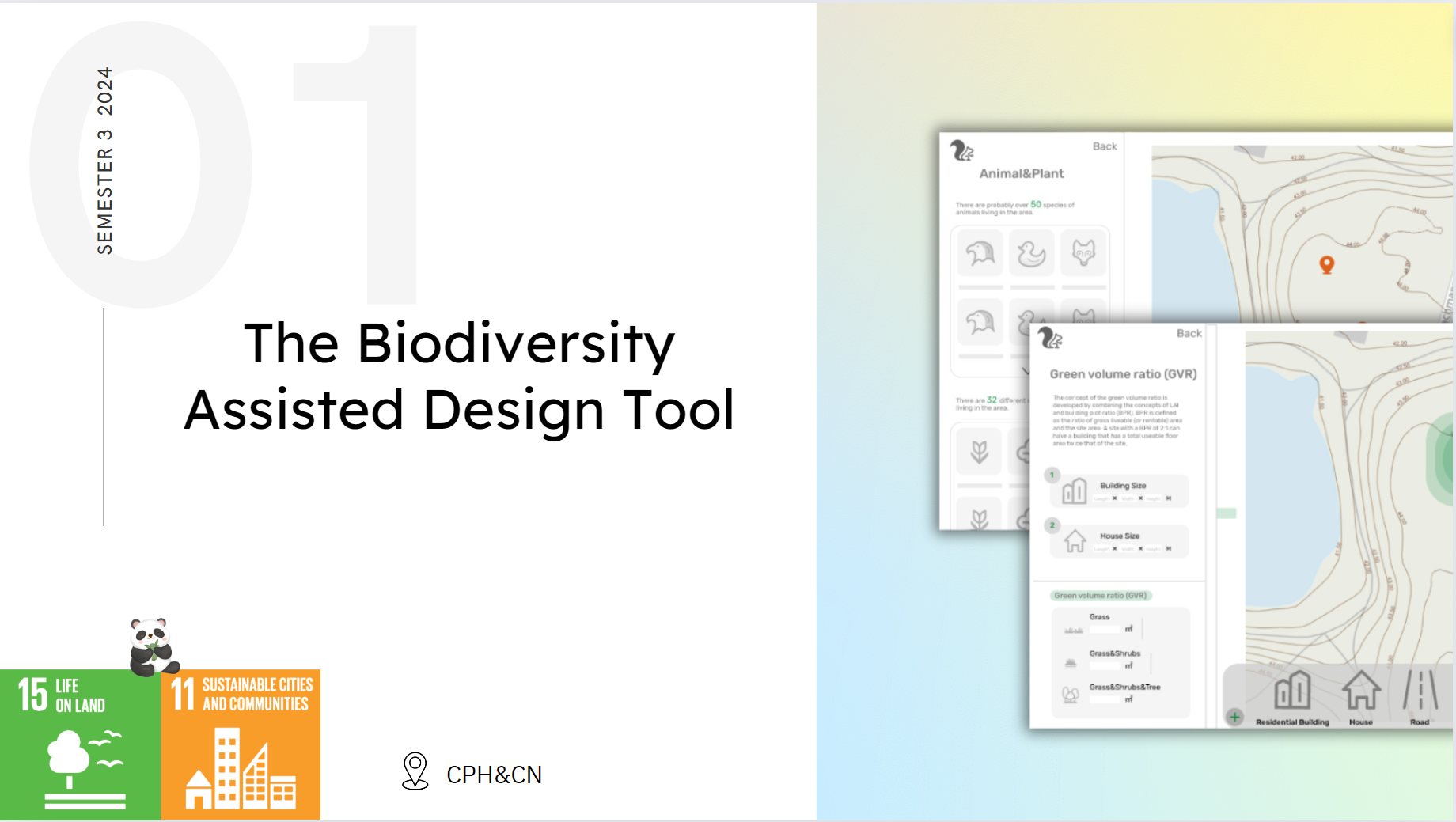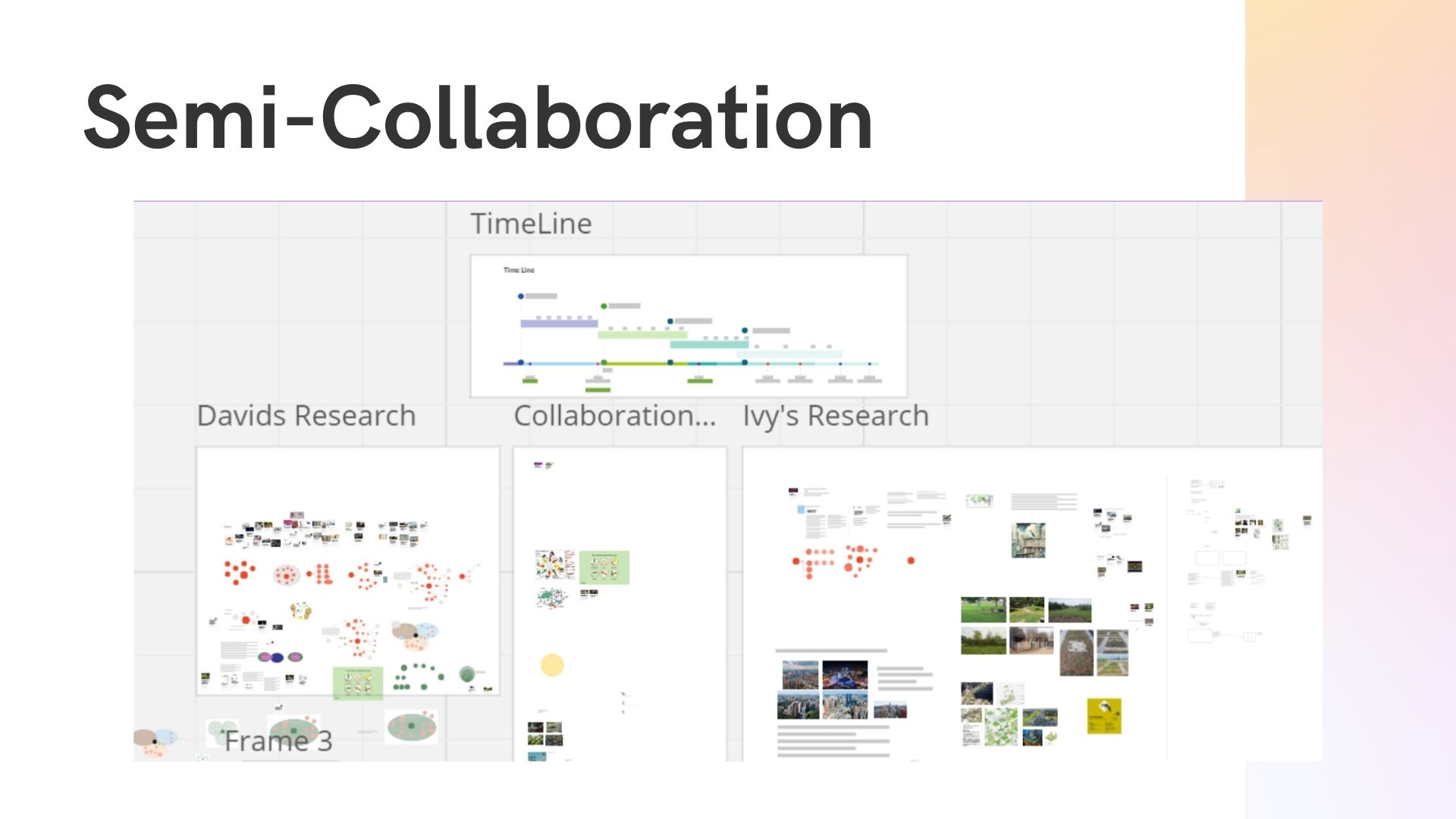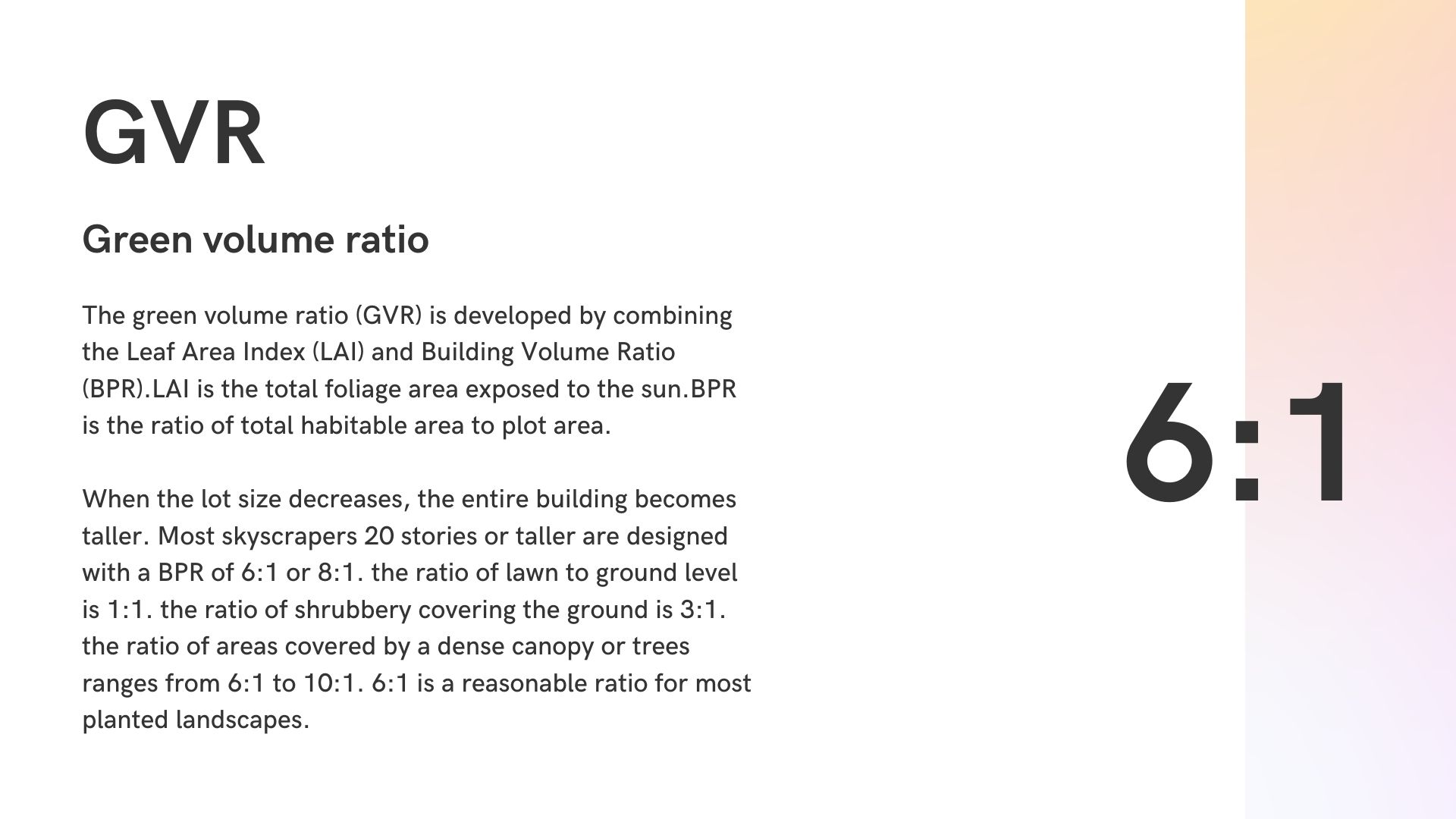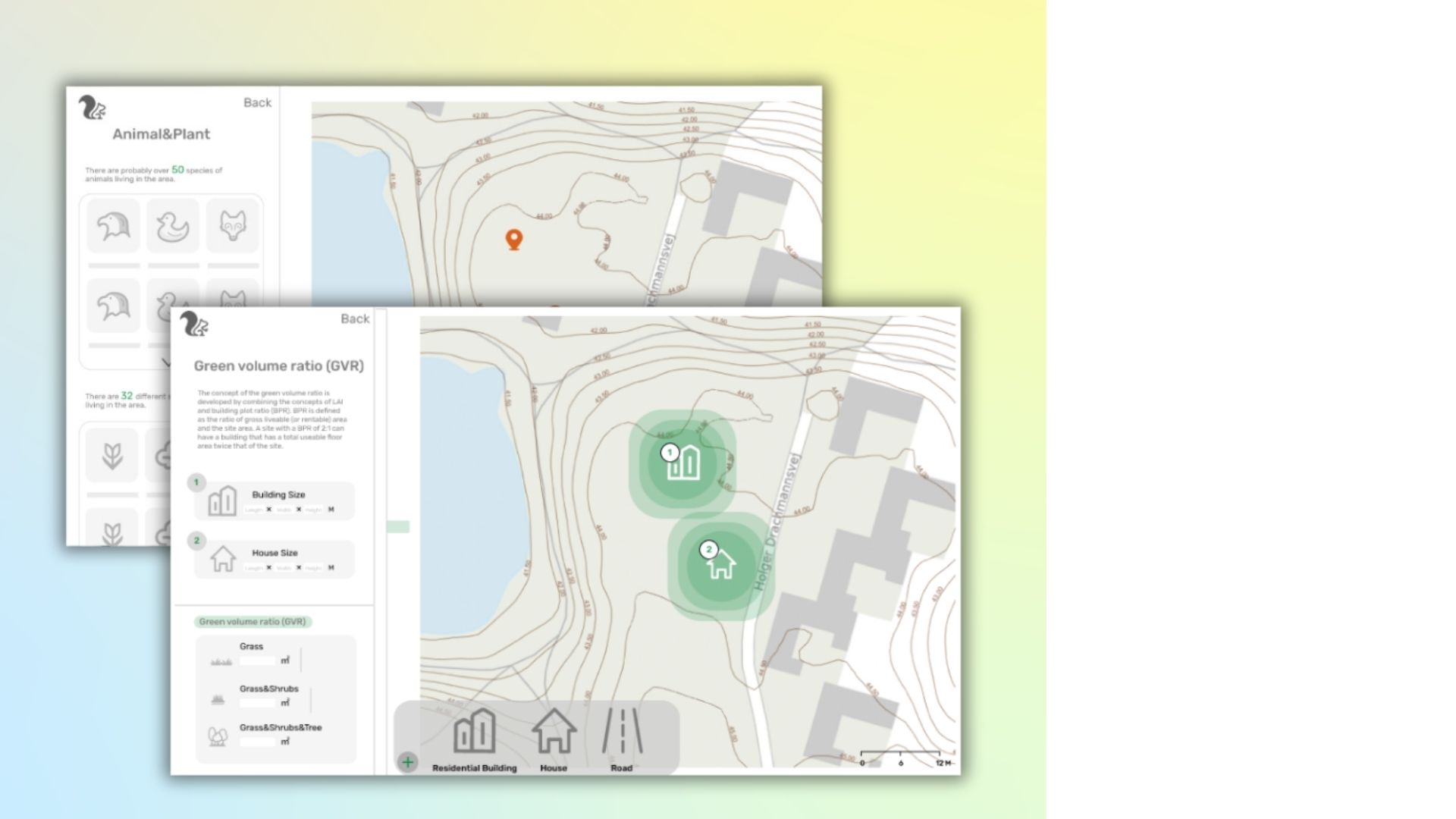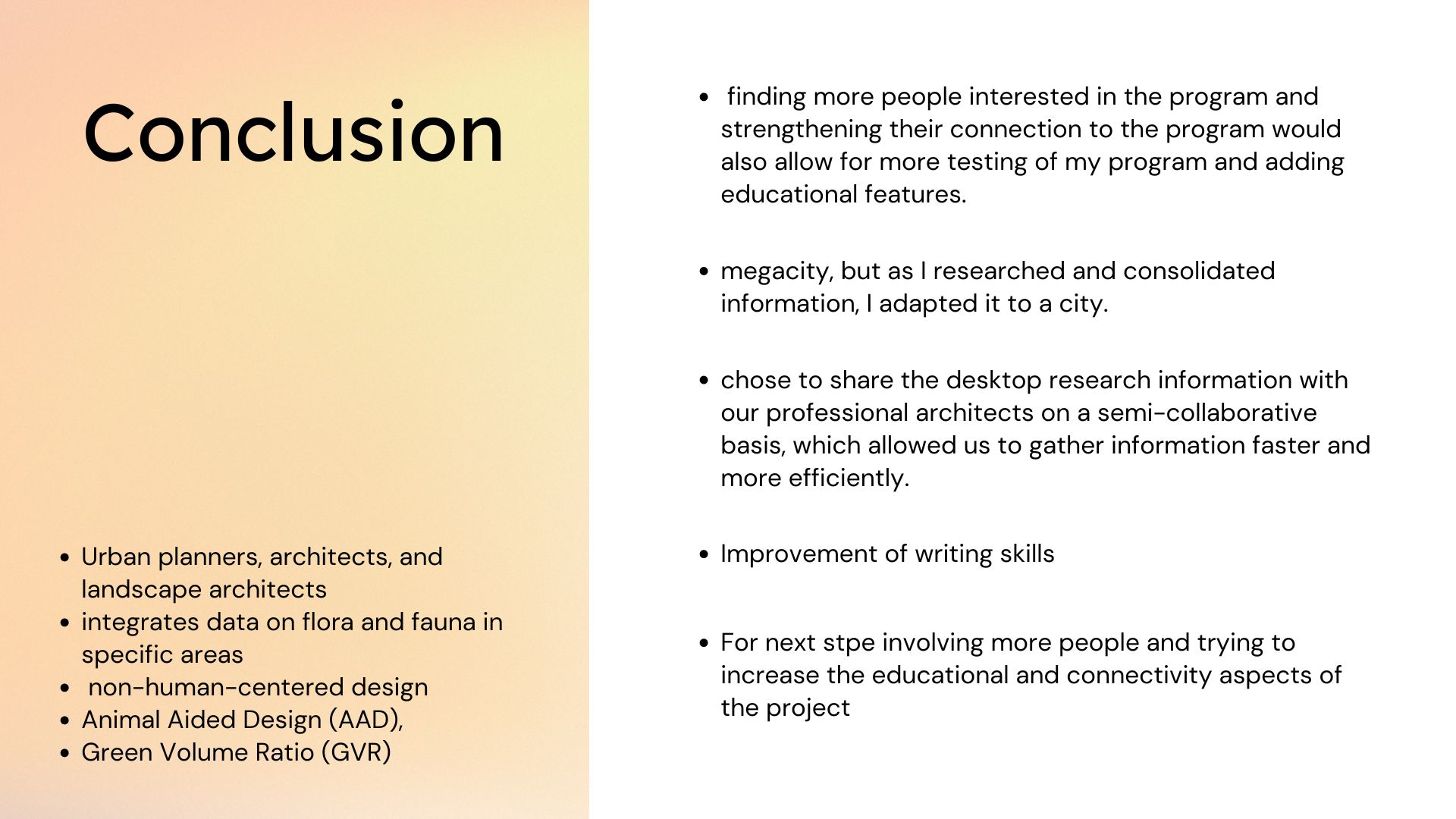The Biodiversity Assisted Design Tool
- 角色: 产品设计师、战略设计师,UI
- 情境(Situation):随着城市化进程的加快,城市中的野生动物栖息地逐渐减少,如何在人类与野生动物之间建立协调共存的关系成为城市规划者面临的重要课题。项目的目标是通过非以人为中心的设计理论和动物辅助设计(AAD)等方法,帮助规划设计师和优化城市空间,确保人与野生动物在城市中的共存。
- 任务(Task):设计一个线上平台,帮助设计师快速获取城市中动植物种类及分布信息,并提供绿色体积比(GVR)计算工具,以支持更可持续的城市设计和建筑规划。
- 行动(Action):
数据收集与分析:基于纪录片《我们的动物邻居》中的数据,研究了中国北京和丹麦哥本哈根城市中的野生动物栖息情况,同时对230种丹麦动物进行了分类和分析。
平台设计与开发:构建了一个线上平台,设计了两个核心功能。第一个功能是帮助用户搜索和定位城市中的目标区域,并计算展示区域内的动植物种类及数量,通过人群视角建立种群关系网络,帮助设计师了解当地生态需求。第二个功能是绿色体积比(GVR)计算工具,用户可以根据建筑输入、需要的绿化面积和设施设计,尽量减少对当地生物多样性的影响。
最佳展示设计范例:平台展示了多个成功的动物辅助设计(AAD)案例,启发设计师在新建筑和既有建筑改造中应用绿色设计理念,提升城市的可持续性和生态友好性。 - 成果(Result):该平台有效提升了城市规划者、建筑师和景观设计师在设计中考虑生物多样性和生态延续的意识。绿色体积比(GVR)工具的使用帮助设计师在规划过程中优化绿色空间布局,促进了城市中人与野生动物的共存。该项目获得了广泛的高度评价,并被众多城市规划项目中认可。
- Role: Product Designer, Strategic Designer, UI
- Situation: With the acceleration of urbanization, the wildlife habitats in cities are gradually shrinking. How to establish a harmonious coexistence relationship between humans and wild animals has become an important issue faced by urban planners. The project aims to help planners and optimize urban spaces by using non-human-centered design theories and animal-assisted design (AAD) methods, ensuring the coexistence of humans and wild animals in the city.
- Task: Design an online platform to help designers quickly obtain information on the types and distribution of animals in the city, and provide a green volume ratio (GVR) calculation tool to support more sustainable urban design and architectural planning.
- Action:
Data collection and analysis: Based on the data from the documentary “Our Animal Neighbors”, the wildlife habitats in Beijing, China and Copenhagen, Denmark were studied. At the same time, 230 types of Danish animals were classified and analyzed.
Platform design and development: A platform was constructed, and two core functions were designed. The first function helps users search and locate target areas in the city, calculate and display the types and quantities of animals in the area, establish a population relationship network from the perspective of the crowd, and help designers understand local ecological needs. The second function is a green volume ratio (GVR) calculation tool. Users can input building information, the required green area and facility design to minimize the impact on local biodiversity.
Best display design examples: The platform showcases multiple successful animal-assisted design (AAD) cases, inspiring designers to apply green design concepts in new buildings and existing building renovations, enhancing the sustainability and ecological friendliness of the city. - Outcomes: This platform effectively raises the awareness of urban planners, architects, and landscape designers in considering biodiversity and ecological continuity in their designs. The use of the green volume ratio (GVR) tool helps designers optimize the layout of green spaces during the planning process, promoting the coexistence of humans and wild animals in the city. This project has received widespread high praise and has been recognized in numerous urban planning projects.
- Tianshuo Zhao (Ivy)
